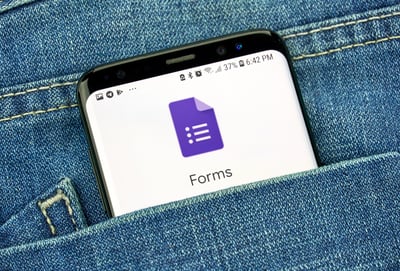PD that Builds Connection and Student Agency
 The goal of professional development is to enhance the learning experience for the students in our classrooms. However, rarely do we ask students for their input on how to do that. Even more rarely do we engage students as part of the professional development process. This is a big miss.
The goal of professional development is to enhance the learning experience for the students in our classrooms. However, rarely do we ask students for their input on how to do that. Even more rarely do we engage students as part of the professional development process. This is a big miss.
When we engage students in the professional development process, we model open- mindedness and lifelong learning. We also signal to them that feedback is a standard and valuable part of any person’s learning process, even adults. Students who become part of the professional development process take on more ownership of the learning experience, which increases their buy-in as stakeholders. In this way, we increase student agency which we define in my book Blended Learning in Action as “giving learners the opportunity to participate in key decisions in their learning experiences.” (Green, Tucker, Wycoff 2016). Through this agency, we create new communication channels that help us learn more about our students and build deeper, more effective relationships with them. As relationships strengthen and agency increases, the goal of better learning experiences becomes a shared outcome, creating a win-win situation for teachers and students.
So how can we create PD opportunities that build student agency and connection? If we break down the learning sequence, we can see three clear opportunities to engage students: 1) planning phase, 2) learning phase, and 3) action phase. Let’s take a look at strategies to involve students in each.
 1 - Planning for PD
1 - Planning for PD
In this stage of the professional development process, teachers and administrators are assessing the needs of their students and the appropriate professional development to meet those needs. In LINC’s Taxonomy of Generative Change, we call this the “Reflect” phase. While teachers bring vast observational and achievement data to this phase, we still make a lot of assumptions on what would be best for students. Using a simple survey tool such as Google Forms, or an interactive video conversation tool such as Flipgrid, we can move beyond assumptions to obtaining actual student insights. Another way we can involve our students in the planning for PD is to share with them the possibilities available to us. For example, teachers using LINCspring’s libraries of personalized professional development cycles could share some cycle objectives available to them with their students, asking for input on what students think would have the most positive impact on the shared classroom experience.
2 - PD Learning Experience
Many schools have gotten creative in involving students to lead PD directly. This is a great way to empower students in the process and to reverse the perspectives typically experienced by each stakeholder. However, this is not always an accessible form of student involvement in the PD learning process. Another way to involve students in this stage of professional development is to have them curate resources for teachers to explore. They can use a tool such as Padlet to gather videos and articles, and to start a conversation with teachers about a specific topic or strategy important to them. Simply having focus group conversations with students to learn their perspectives about a topic, like student engagement or technology integration, is an excellent form of learning. When using LINCspring, teachers can watch the Spark video with their students to ignite a conversation, and may even share some of the Reflect questions with students for input.
 3 - Taking Action - “Tinkering” with New Strategies
3 - Taking Action - “Tinkering” with New Strategies
Often we think of professional development as the event we attend, but the most important part of the learning takes place after the PD event when we implement the strategies learned. Within each LINCspring cycle, we call this the “Tinker” phase of learning, which involves trying something new and getting feedback from students. We can involve students in this phase of PD in multiple ways: in the planning of the lesson, during the lesson, or following the experience. To engage students in planning, teachers can conference with students to identify targeted skills and use the new tool or strategy in their learning experience. There are other planning activities such as having students identify an ideal role to play within a group activity, or suggest a topic of interest for the group or individual. During a lesson, feedback could look as simple as prompting students to indicate their level of engagement via a tool such as a Pear Deck or Mentimeter survey. If a teacher is using a small group model like Station Rotation, it can be simply asking students in the small group how the experience is working for them. After the lesson, teachers can similarly survey students or pull a focus group together for shared reflection on the experience.
Though I’ve covered several ways to engage students in the PD process, trying just one of them can create a big opening for deeper connection with students and for building student agency. In fact, starting simple is key as students are not used to this form of agency, so we need to consciously build their capacity to take on this new role and to see its incremental impact.
We know that teaching is not simply transferring information to students. The most effective teaching flows from a deep connection between students and teachers and an empowerment of students as agents of their own learning. Let’s start leveraging student involvement in professional development as a unique and powerful channel to connect and empower!